Travel: Kaunas - rich history, top eateries and basketball
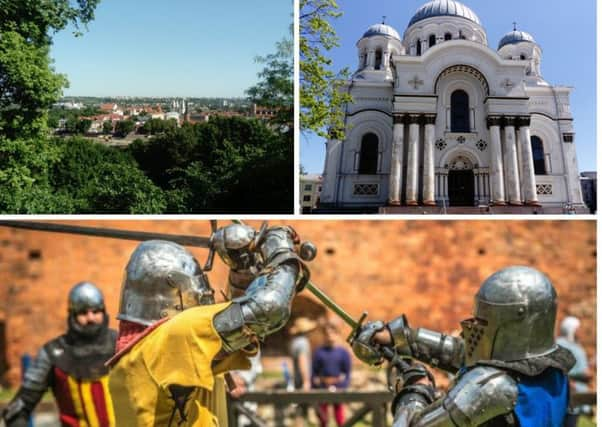

It’s my second night in Lithuania’s second city and all around me people are biting nails, edging forward in their chairs and chatting anxiously. Guidebooks will tell you the country has two religions, Catholicism and basketball, and watching the crowd as the local team play on a giant screen in a vital play-off, it’s easy to see why.
The weather is pleasant (certainly not Baltic) and the buildings, the people, the tree trunks and even the food I’m served are adorned with green and white, the colours of BC Žalgiris. Despite the score line in the Lithuanian’s favour it’s tense and the locals are worried they will throw their lead away. Déjà vu. It’s just like watching Scotland play.
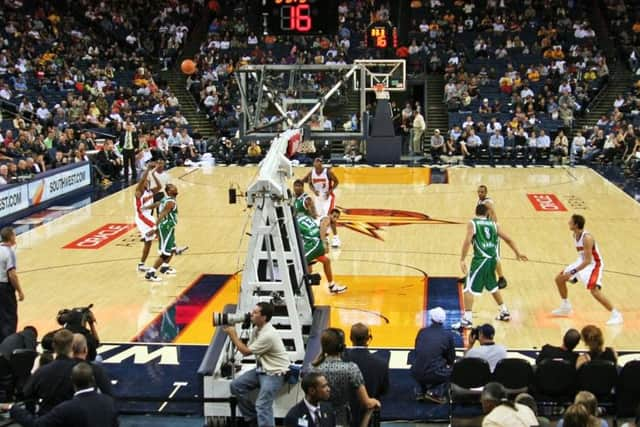

Green city
Advertisement
Hide AdAdvertisement
Hide AdGreen is everywhere in Kaunas, the biggest city in the country after the capital Vilnius. I must confess I knew little of Lithuania before departing on my three day trip except it has an abundance of trees - woodland makes up a third of the country - and it was the last pagan country in Europe, converting to Christianity in 1387, late in the day when you consider British tribes dumped paganism around 600 AD. Peering out the window of the plane as I descended into Kaunas I could see the vast, dark forests where Lithuanians once believed their gods lived, encircling my destination and stretching to the horizon.
Kaunas airport is compact and easy to navigate. My flight was courtesy of RyanAir who offer two flights a week to the city from Edinburgh Airport (Saturday and Tuesday) and the journey takes just over two and a half hours.
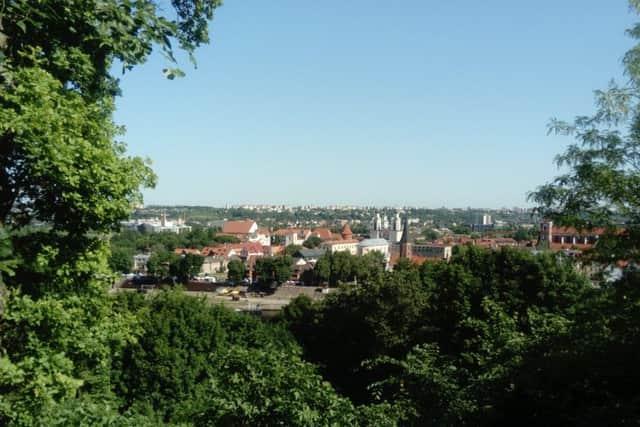

My home for the next three nights was the straightforwardly named, Kaunas Hotel, right on the main pedestrian thoroughfare, Laisves (Liberty) Avenue, connecting the new and old districts of the centre. It made an ideal base to explore from. My room was spacious and quiet and the wider hotel has a swimming pool and spa area for those seeking a little R & R.
The WiFi in my hotel and all public places around Kaunas is lightning fast. In fact, Lithuania regularly ranks top in the world for internet speeds. A former Eastern bloc backwater this certainly ain’t.
Medieval fayre
First up for me was the Hanseatic Days Festival, a weekend-long celebration of the city’s 610th birthday and its links to the historic Hanseatic League, a north European trade powerhouse of the Middle Ages made up of around 200 cities in seven countries at its peak. I fuel up at Višta Puode (https://xn--vitapuode-m3b.lt/), a chic bar-restaurant one block from the glimmering white domes of St Michael the Archangel Church at the foot of Laisves Avenue, offering traditional and modern meals alongside some truly excellent coffee.
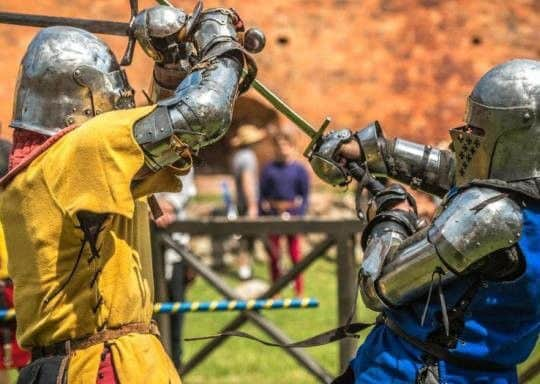

Sufficiently caffeinated I venture to the festival which was centred around the city hall in the Old Town and Santakos Parkas (park). Hanseatic Days is a true medieval ‘fayre’ and clearly a major event with thousands enjoying what is ostensibly a big day out in glorious sunshine.
I meandered from stall to stall, sampling local beers, watching knights fight in tourneys and tried my hand at axe throwing (as you do) all the while munching on kepta duona: strips of dark rye bread, fried until crispy, then salted and rubbed with plenty of garlic - the number one bar snack in Lithuania.
Discovering the back of my neck is a little sunkissed (okay, burnt) I seek refuge at Medžiotojų užeiga (www.medziotojai.lt/en). The restaurant, which translates as Hunter’s Inn, is cozy, atmospheric and furnished with sturdy oak tables, wooden beams and stuffed animals on the walls. It’s an eatery for meat-lovers, (although there are vegetarian options) with a vast array of local produce on the menu. On the recommendation of the exceptionally friendly staff I ate exquisite red deer medallions with boletus mushrooms, hazelnuts and potatoes gratin.
Advertisement
Hide AdAdvertisement
Hide AdAfter devouring Bambi’s extended family and full of local wheat beer I call it a night and head back to the hotel with the festival celebrations still in full flow.
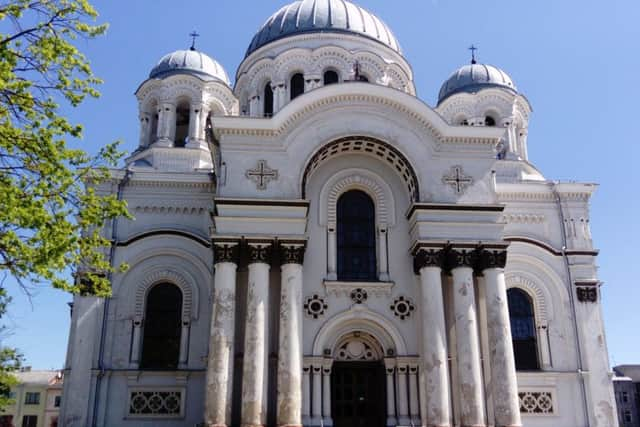

“Staying on the map”
The next morning, I meet my guide for the day, Linas, and set out for a tour of the Old Town. First stop is Aleksotas viewpoint where I am treated to panoramic views of the city, gazing out at the Old Town and the confluence of the rivers Neman and Neris. From my vantage point it appears the surrounding forests want the land back. Trees line nearly every city street and corner, their branches stretching up to the red rooftops.
Linas tells me much of Lithuania’s history is about struggling to “stay on the map.” Kaunas, like many cities in this corner of the world, has endured invasion from foreign powers on numerous occasions. In the 13th century it was targeted by the Pope and legions of Germanic and Polish crusaders raided the territory. In spite of the hostile neighbourhood, the Grand Duchy of Lithuania stood from 1395 right up until 1795, when the Russians moved in and didn’t leave. Kaunas eventually became a temporary capital as the Poles and Bolsheviks fought over Vilnius once the Lithuanians declared independence in 1918.
In a whirlwind tour through the Old Town we take in the Town Hall, known as the ‘White Swan’, one of the most beautiful buildings in the centre, the jam packed 15th century Vytautas church (it was a Sunday and Lithuania is 80% Catholic), the city’s ornate Cathedral (the interior is being restored, but it’s still worth seeing), as well as Kaunas Castle.
We stop at Celsius 273 (https://celsius273.com), an art gallery-come-cafe, which is emblematic of the city’s modernism and cultural scene. Lunch is at Hop Doc (http://www.hopdoc.lt) a gastropub stocked with a wide selection of Baltic beers and gourmet burgers.
Next up, I’m whisked away to Kaunas’ 9th Fort museum, A sombre but important site I would recommend to all visitors. The fort documents the horrors inflicted upon Lithuania’s 200,000 Jews during the Second World War, 95% of whom were wiped out by the Nazi occupiers as well as detailing life under oppressive Soviet rule in the post-war years.
Lithuania’s second religion
I rush back to town for a live streaming of a basketball game at the Presidential Palace yard. Kaunas side BC Žalgiris narrowly defeat rivals CSKA Moscow and I join the Lithuanians around me in celebrating the victory until late into the night.
Waking with a slightly fuzzy head, I round off my final day in the city with a guided tour of modernist architecture in the city’s New Town - which is pushing for UNESCO recognition - followed by an exquisite meal at Uokstas (http://www.uoksas.eu) one of the city’s top restaurants which is riding the wave of the Baltic’s emergence as a must-visit region for foodies.
Advertisement
Hide AdAdvertisement
Hide AdI crammed a lot into my three day jaunt around Kaunas and it whet my appetite for more of Lithuania. Whether visiting for a city-break or as the start point of a fly and drive tour through the Baltic states, Kaunas is well worth a visit with trendy bars, rich history and fabulous eateries.
THE FACTS
RyanAir fly from Edinburgh to Kaunas twice a week with prices starting. Flights in the summer starts from around £25 one way. For more information and to check fare price visit www.ryanair.com
Kaunas Hotel is located on Laisves av. 79, LT-44297 Kaunas. To book visit http://www.kaunashotel.lt
Activities were arranged through KaunasIN http://kaunasin.lt/